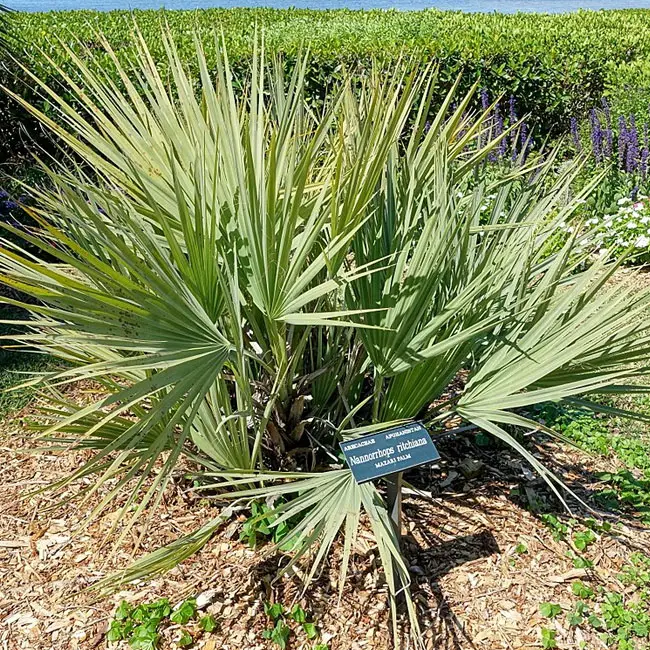
The Mazari Palm Tree, scientifically known as Nannorrhops ritchiana, is a rare palm that has been gaining popularity recently due to its striking appearance and impressive cold-hardiness, making it an excellent choice for landscapes in USDA Zone 8.
This palm is native to the arid regions of Afghanistan and Pakistan. It is naturally found in desert areas in these countries and has adapted to thrive in dry and harsh environments. Given its desert origins, the Mazari Palm can readily adapt to various types of soil.
Quick Facts:
| Scientific name: | Nannorrhops ritchiana |
| Common names: | Mazari Palm, Mazzari Palm. |
| Origin: | Native to Afghanistan and Pakistan. |
| Growth Rate: | Slow. Up to 10 – 20 ft tall and 5-10 ft wide. |
| Cold Tolerance: | USDA Zones 8a (10 – 15 F) to 11 (above 40 F). |
| Light Req: | Full sun. |
| Water Req: | Low |
| Soil Req: | Widely adaptable if well-drained |
| Fruit: | Yes. |
| Propagation: | By seed, germinating slowly |
Identifying Characteristics of the Mazari Palm
Nannorrhops ritchiana distinguishes itself by its unique appearance, resembling a shrub rather than a traditional palm. It lacks a trunk and crownshaft, featuring several stems that grow tightly together from a single base.
The leaves are semi-palmate, resembling fan-shaped cabbage palm leaves. These leaves are robust and rigid, measuring approximately 4 feet in length, with unarmed petioles extending to 2 feet.
Their color can range from blue-green to gray-green, with each leaf comprising 20-30 leaflets, each measuring 1-2 feet long.
Flowers and Fruits of the Mazari Palm
In the flowering season, the Mazari Palm produces clusters of white flowers on 3-foot-long inflorescences at the top of its stems. Typically, the Mazari Palm exhibits dioecy, with male and female flowers growing on separate plants.
After flowering, the palm yields edible orange fruits, measuring half an inch in diameter and containing a single seed. These fruits are round and range in color from brown to orange.
Each stem is monocarpic, meaning that as the fruit matures, the branch will die, but the palm will continue to grow from basal sprouts.
Caring for the Mazari Palm
Mazari Palms tend to grow in clumps, reaching heights of 10-20 feet and widths of 5-10 feet. These palms are highly cold-hardy, capable of surviving temperatures as low as 10°F. They thrive best in USDA Zones 8a (with temperatures between 10 to 15°F) to 11 (above 40°F).
While they prefer full sun, they can also tolerate partial shade. These palms do not demand excessive water, but providing water when the soil becomes dry can expedite their growth rate.
Mazari Palms thrive in well-drained soil and are adaptable to cool, dry conditions as well as tropical or semi-tropical environments. Their slow growth rate allows them to tolerate drought effectively.
To prevent nutritional deficiencies, it is recommended to apply a high-quality palm fertilizer with a continuous-release formula twice a year during the growing season.
The propagation of Mazari Palms is typically accomplished through seeds, although it’s important to note that these seeds have a lengthy germination period.
Mazari Palm Tree Pictures
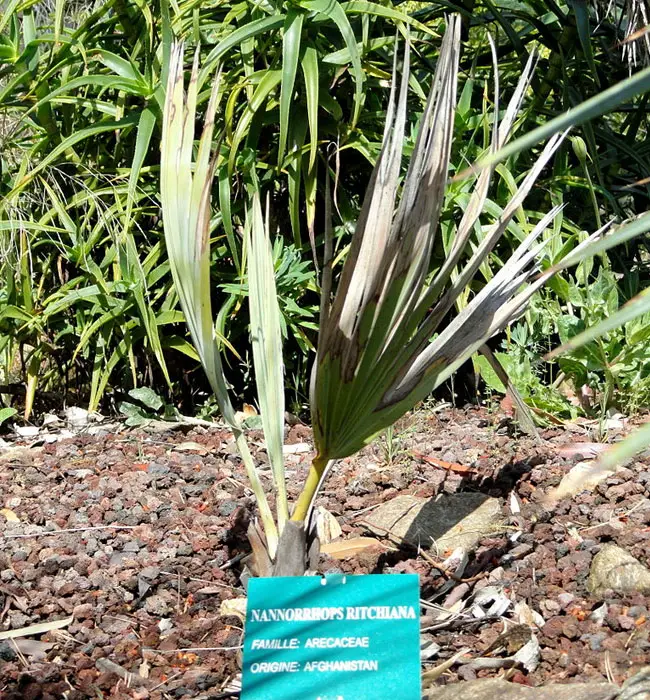
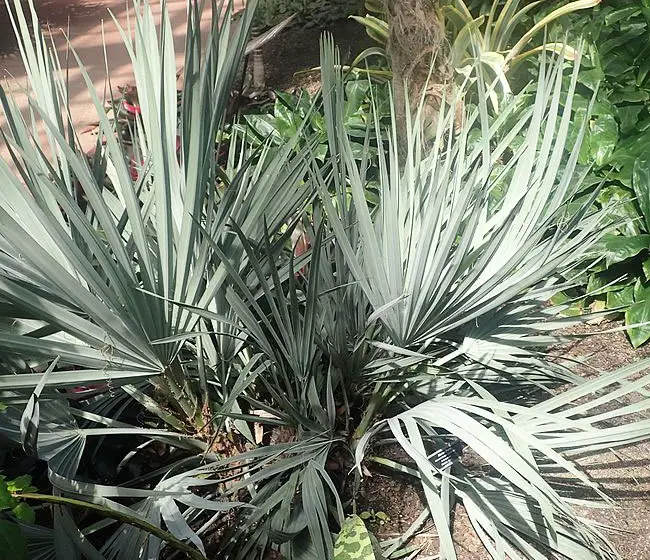
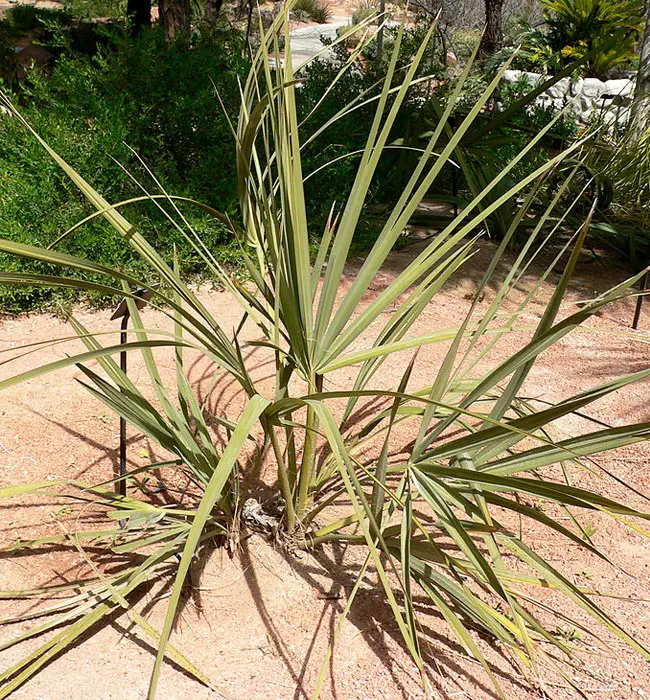
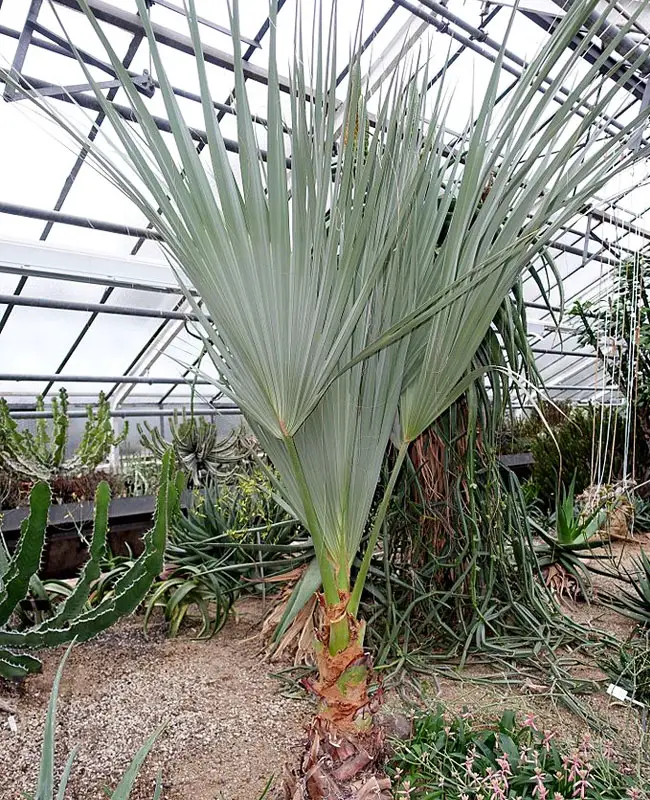
More information can be found on Floridata site.

I’m looking to put palm trees around my pool in northern utah.